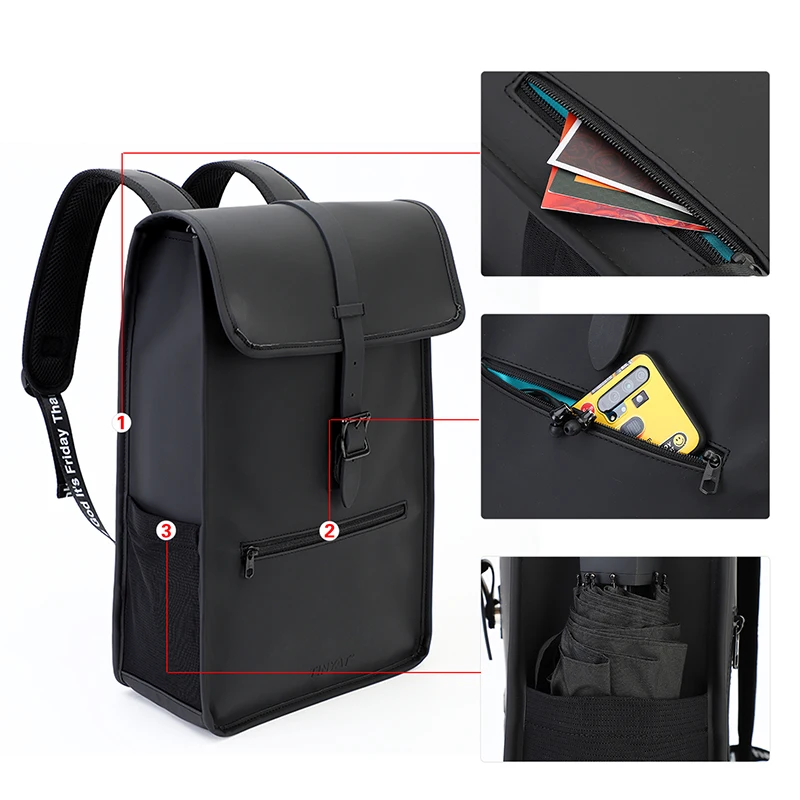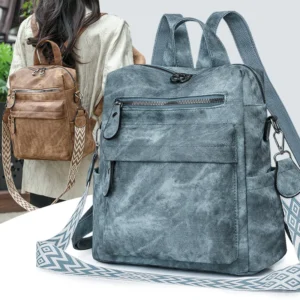Introduction: Why Waterproofing Your Leather Bag Is Essential
Leather bags represent a significant investment in both style and functionality. However, without proper protection, even the finest leather can fall victim to water damage. Waterproofing your leather bag isn’t just about preparing for rainy days—it’s about preserving your investment for years to come.
Water can be surprisingly destructive to untreated leather, causing:
- Stubborn water stains that permanently mark the surface
- Cracking and structural damage as leather dries improperly
- Distortion of your bag’s carefully crafted shape
- Potential mold and mildew growth in humid conditions
- Premature aging and deterioration of the material
By implementing proper waterproofing, you’ll enjoy numerous benefits:
- Extended lifespan of your cherished leather accessories
- Maintained appearance even after unexpected encounters with moisture
- Enhanced resilience against everyday spills and light rain
- Preserved suppleness and character of the leather
It’s important to understand that even premium full-grain leather backpacks benefit tremendously from waterproofing treatments. While no treatment will make leather completely impervious to water, proper leather conditioning and waterproofing can significantly increase its resistance and ability to withstand occasional exposure to moisture.
In this comprehensive guide, we’ll explore various methods of waterproofing, from convenient sprays to traditional waxes and oils, helping you choose the best approach for your specific leather bag.
Understanding Leather’s Relationship with Water
Leather’s natural properties make it both wonderfully durable and inherently vulnerable to water. As an organic material derived from animal hide, leather contains pores and fibers that can absorb moisture. This absorption isn’t immediately destructive, but problems arise when leather dries improperly after becoming wet.
When discussing leather protection, it’s crucial to understand the distinction between water-resistant and waterproof. Even with the most thorough treatment, leather will never be completely waterproof like synthetic materials. Instead, quality waterproofing creates strong water resistance, allowing water to bead and roll off rather than soak in immediately.
Different leather types for durable bags interact with water in unique ways:
- Full-grain leather, with its intact natural grain, offers better inherent water resistance than processed options
- Top-grain leather, slightly thinner and more processed, may absorb water more readily
- Suede and nubuck, with their fuzzy textures, are especially vulnerable to water staining and damage
- Vegetable-tanned leather tends to absorb water more readily than chrome-tanned varieties
The key to effective waterproofing is finding the balance between protection and breathability. Leather needs to “breathe” to maintain its suppleness and prevent cracking. Waterproofing products work by creating microscopic barriers that repel water molecules while still allowing air molecules to pass through. This delicate balance is why quality products designed specifically for leather are essential.
Essential Preparation Before Applying Any Waterproofing Treatment
The effectiveness of any waterproofing method depends heavily on proper preparation. Skipping these crucial steps can lead to uneven protection, poor absorption, and potentially even damage to your leather bag.
Start with a thorough cleaning process:
- Empty your bag completely and shake out loose debris
- Gently wipe the surface with a soft, dry cloth to remove dust
- For more thorough cleaning, use a pH-neutral leather cleaner specifically designed for backpacks
- Pay special attention to seams, handles, and other areas where dirt accumulates
- Allow the bag to dry completely at room temperature
After cleaning, conditioning becomes essential. Think of conditioning as preparing the foundation before applying waterproofing. A properly conditioned bag absorbs waterproofing treatments more effectively and maintains better flexibility. Quality leather conditioner restores natural oils, preventing the leather from becoming brittle.
Before applying any new product, patch testing is absolutely critical:
- Select an inconspicuous area (inside flap, bottom corner, etc.)
- Apply a small amount of your chosen waterproofing product
- Allow proper drying time according to the product instructions
- Check for any undesired color changes, texture alterations, or adverse reactions
The leather should be completely dry before conditioning or waterproofing. Rushing this process by using heat sources like hair dryers can cause the leather to shrink, crack, or harden unevenly. Patience during preparation pays dividends in protection quality and longevity.
Method 1: Waterproofing Sprays for Versatility and Ease
Waterproofing sprays offer perhaps the most user-friendly approach to protecting leather bags. These products create an invisible protective layer on the leather’s surface that causes water to bead up and roll off rather than being absorbed.
How Waterproofing Sprays Work
Modern waterproofing sprays typically contain synthetic polymers or silicone compounds that bond to leather fibers. The best formulations are:
- Silicone-free options (preferable for fine leathers)
- Water-based formulations (environmentally friendlier)
- Alcohol-free versions (less drying to leather)
Advantages of Spray Treatments:
- Simple application requiring minimal expertise
- Virtually invisible protection that doesn’t change leather appearance
- Suitable for most leather types including delicate suede and nubuck
- Quick drying time compared to other methods
- Even application when used correctly
Limitations to Consider:
- Less durable protection than waxes or creams
- Requires more frequent reapplication (typically every 3-6 months)
- May not provide sufficient protection for extremely harsh conditions
- Some formulations can affect leather breathability
Application Process:
- Clean and condition your bag as outlined in the preparation section
- Hold the spray bottle 6-8 inches away from the leather surface
- Apply in light, even sweeping motions rather than concentrated sprays
- Ensure complete coverage, paying extra attention to seams and stress points
- Allow to dry completely (usually 24 hours) before using the bag
- Apply a second light coat for maximum protection
For optimal results, select high-quality leather waterproofing products specifically designed for your type of leather. Environmental considerations are also worth noting—look for non-aerosol options with fewer volatile organic compounds for a more eco-friendly choice.
Method 2: Waxes and Creams for Maximum Protection
When maximum water resistance is the priority, waxes and creams offer the most robust protection for leather bags. These products create a thicker, more substantial barrier against moisture while simultaneously conditioning the leather.
Composition and Characteristics
Quality leather waterproofing waxes typically contain:
– Natural beeswax that creates a physical barrier against water
– Lanolin for conditioning and flexibility
– Natural oils that penetrate and nourish the leather
– Sometimes carnauba wax for added hardness and shine
Benefits of Wax/Cream Treatments:
- Superior water repellency even in heavy rain
- Dual-action protection and conditioning in one application
- Longer-lasting protection (typically 6-12 months depending on use)
- Added conditioning benefits that prevent leather from drying out
- Traditional methods proven effective over centuries
Considerations Before Using:
- Will likely darken leather slightly (sometimes significantly)
- May slightly alter leather texture and finish
- More labor-intensive application process
- Not suitable for suede or nubuck leather
- Requires proper buffing to avoid sticky residue
Application Technique:
- Clean and prepare your bag as previously outlined
- Use a soft, lint-free cloth or applicator sponge
- Collect a small amount of wax or cream (pea-sized for starting)
- Apply in small circular motions, working the product into the leather
- Pay special attention to seams, edges, and stress points
- Allow to absorb for 15-20 minutes (follow specific product instructions)
- Buff thoroughly with a clean cloth to remove excess product
- Allow 24-48 hours of curing time before heavy use or exposure to moisture
Full-grain and vegetable-tanned leathers particularly benefit from wax treatments. For those concerned about ingredients, eco-conscious leather treatment methods include options with natural, sustainable components.
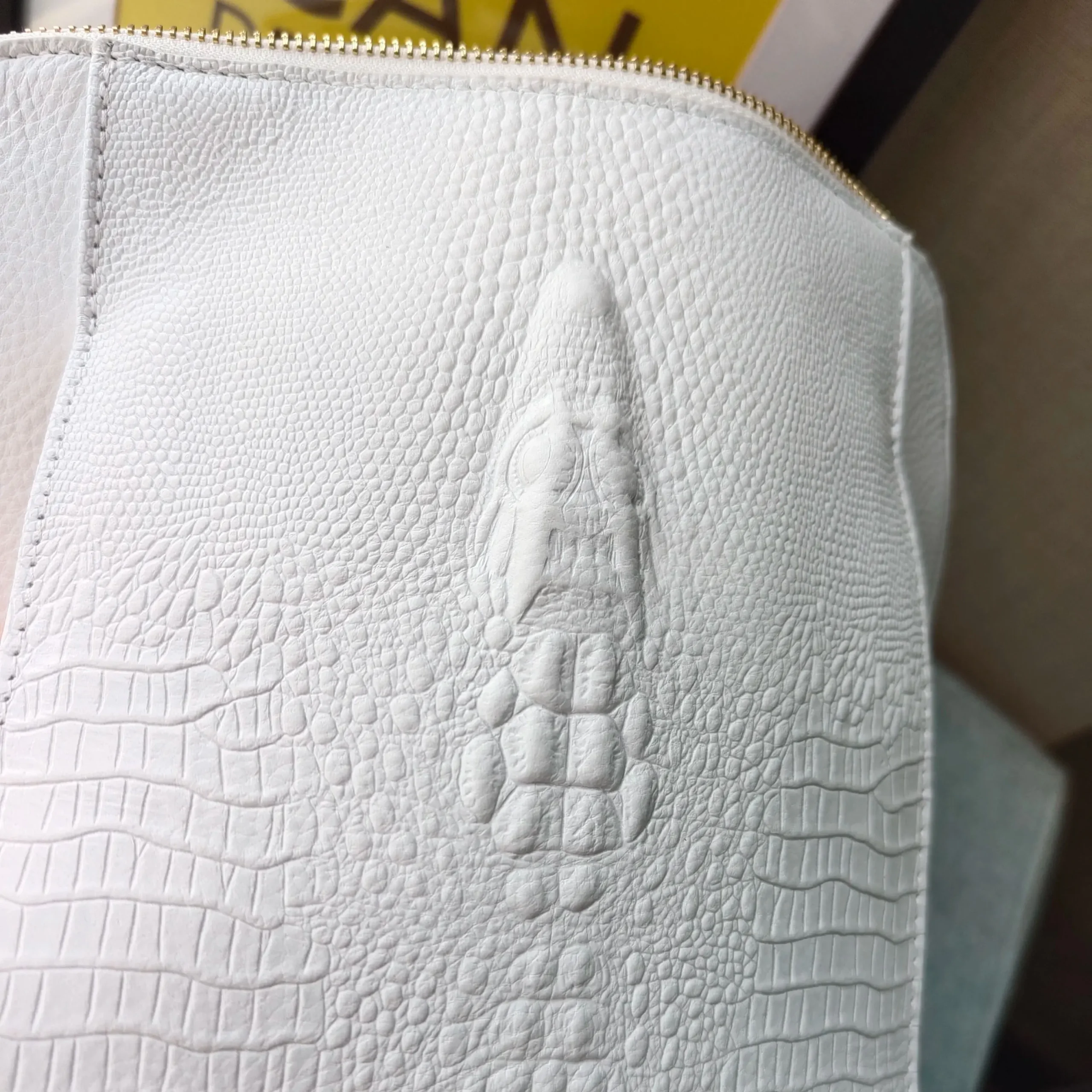
Method 3: Natural Oils – Traditional but Use with Caution
Natural oils represent one of the oldest methods for creating water resistance in leather. While they can be effective, they require more careful consideration and application than modern alternatives.
Traditional Oil Options
- Mink oil: Derived from mink fat, offers excellent water resistance
- Neatsfoot oil: Made from cattle bones, historically used for leather softening
- Specialty leather oils: Formulated specifically for leather waterproofing
How Oils Create Water Resistance
Unlike surface treatments, oils penetrate deeply into leather fibers, conditioning from within while creating a natural barrier against moisture. This deep penetration can provide lasting protection but comes with significant trade-offs.
Important Cautions:
- Oils will significantly darken most leathers—expect a 2-3 shade change
- Once darkened with oil, leather cannot be restored to its original color
- Oils can make leather attract and hold dust and dirt
- Improper application can leave leather feeling greasy
- Not suitable for suede, nubuck, or many finished leathers
When Oil Treatments Make Sense:
- For heavy-duty working leather goods that prioritize function over appearance
- Already dark leather items where color change won’t be noticeable
- Vintage or rustic leather pieces where darkening enhances character
- In extreme weather conditions where maximum protection is essential
Oils to Absolutely Avoid:
- Cooking oils (olive, vegetable, coconut) which can go rancid
- Motor oils or petroleum products that can degrade leather fibers
- Unknown oil blends without specific leather care formulation
Understanding how oiling affects leather waterproofing is essential before choosing this method. For most premium leather backpacks, waxes or sprays typically represent safer options with more predictable results.
DIY Beeswax Waterproofing: Crafting Your Own Protection
Creating your own waterproofing treatment can be both economical and satisfying, allowing complete control over the ingredients. A traditional beeswax cream offers excellent water resistance and can be customized to your preferences.
Ingredients Needed:
- 1 ounce pure beeswax pellets (or grated beeswax block)
- 3 tablespoons jojoba oil (neutral and stable)
- 1 tablespoon sweet almond oil (for softening properties)
- Optional: 5-10 drops essential oil for fragrance (cedar or sandalwood work well)
Equipment Required:
- Double boiler or heat-safe glass bowl and saucepan
- Silicone spatula for stirring
- Small storage container with lid
- Kitchen scale for accurate measurements
- Clean application cloths
Preparation Process:
- Create a double boiler by placing the glass bowl over a pan with 1-2 inches of simmering water
- Add beeswax to the bowl and melt completely
- Once melted, remove from heat and add jojoba oil and almond oil
- Stir thoroughly until completely combined
- Add essential oils if desired (very sparingly)
- Pour mixture into container while still warm
- Allow to cool completely and solidify before closing the container
Application Guidelines:
- Apply using clean fingers or cloth in thin, even layers
- Work into leather using circular motions
- Allow to set for 15 minutes
- Buff thoroughly to remove excess
- Apply a second thin coat if needed for maximum protection
This DIY cream works best for smooth, full-grain leathers. The resulting mixture should have a firm but spreadable consistency similar to lip balm. Store in a cool, dry place and use within 6-12 months for best results.
For those interested in natural approaches beyond waterproofing, exploring other DIY leather care techniques for travel backpacks can help maintain your bag’s condition during adventures.
Matching the Right Waterproofing Method to Your Specific Bag
Not all leather bags require the same waterproofing approach. The optimal method depends on several critical factors specific to your particular bag:
Leather Type Considerations:
- Full-grain leather: Can handle most treatments; waxes and creams offer excellent results
- Top-grain leather: Sprays work well for maintaining the finish; light waxes are also suitable
- Suede and nubuck: Only use specialized suede sprays; avoid all waxes and oils
- Vegetable-tanned leather: Absorbs treatments deeply; waxes provide excellent protection
- Chrome-tanned leather: More water-resistant naturally; lighter treatments usually sufficient
Color and Appearance Factors:
- Dark leathers can handle oils and heavy waxes without noticeable darkening
- Light-colored bags benefit from clear sprays that won’t alter appearance
- Bags with a natural patina might be enhanced by wax treatments
- Designer bags with specific finishes may require brand-recommended products only
Usage and Exposure Level:
- Daily commuter bags used in unpredictable weather benefit from heavy-duty wax protection
- Occasional-use luxury bags may need only light spray protection
- Travel bags for varying climates may require combination approaches
- Seasonal bags should be treated before storage and prior to their season of use
For leather travel backpacks that face diverse conditions, consider a combination approach: conditioning the bag thoroughly, applying a light wax to high-exposure areas (bottom, outer pockets), and finishing with a spray protector for uniform coverage.
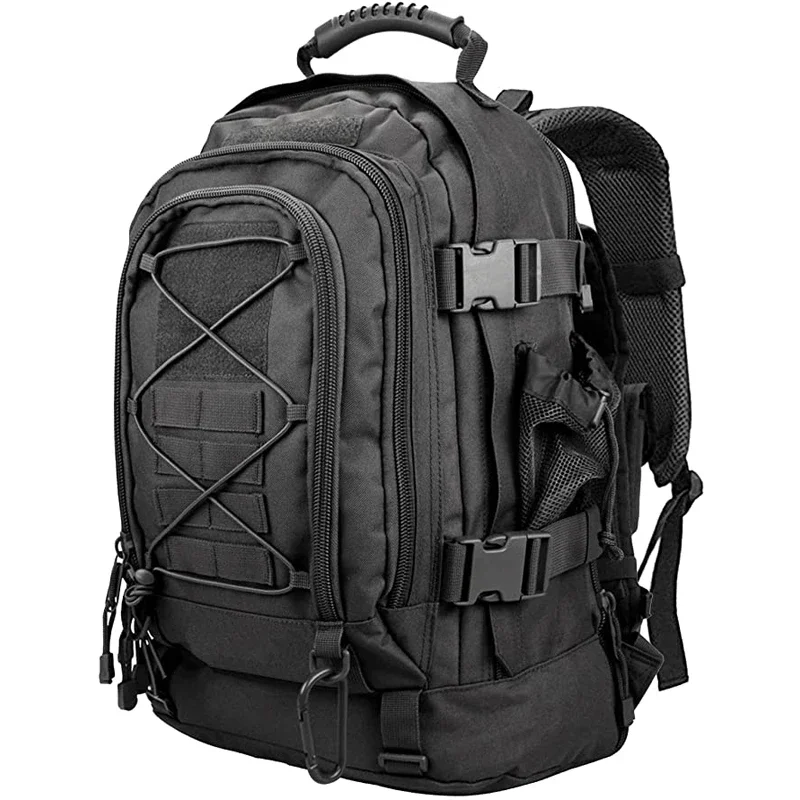
Immediate Care: What to Do If Your Bag Gets Wet Despite Treatment
Even properly waterproofed leather can become saturated in extreme conditions. When this happens, quick action can prevent lasting damage:
- Gently blot excess water with a clean, absorbent cloth – never rub, as this can push water deeper into the leather
- Remove all contents immediately to prevent interior damage and reduce weight
- Reshape the bag while damp to maintain its intended form
- Allow natural air drying at room temperature – never use hair dryers, radiators, or other direct heat sources which can cause leather to crack and warp
- Insert crumpled paper or towels inside to maintain shape while drying
- Keep away from sunlight during the drying process to prevent uneven fading
- Allow complete drying (24-48 hours minimum) before using again
Once thoroughly dry, leather will need reconditioning as water exposure removes natural oils. Apply a quality leather conditioner to restore suppleness, followed by reapplication of your chosen waterproofing method.
Different leather types require specific approaches when wet. Suede, for example, should be blotted, then brushed with a suede brush once dry to restore texture. The ultimate guide to conditioning leather backpacks provides detailed restoration techniques for water-damaged leather.
Comprehensive Leather Bag Maintenance Beyond Waterproofing
Waterproofing represents just one aspect of a complete leather care regimen. For maximum lifespan and beauty, incorporate these practices into your routine:
Daily Care:
- Wipe down with a soft cloth after each use
- Remove surface dirt before it becomes embedded
- Store properly in dust bag or pillowcase when not in use
- Avoid prolonged exposure to direct sunlight
Weekly Maintenance:
- Check for spots or stains that need attention
- Inspect hardware for issues (zippers, clasps, buckles)
- Apply leather conditioner to frequently touched areas (handles, straps)
- Ensure proper shape is maintained through proper storage
Monthly Rituals:
- Deep clean with appropriate leather cleaners
- Condition the entire bag thoroughly
- Inspect for early signs of wear requiring repair
- Check waterproofing by testing a small droplet of water (should bead up)
Seasonal Attention:
- Apply fresh waterproofing treatment before rainy seasons
- In winter, wipe away salt residue immediately
- In summer, protect from excessive heat and sunlight
- Before storage, clean and condition thoroughly
Leather maintenance guides for commuters offer specialized advice for those who use their bags daily in varying conditions. Regular maintenance not only preserves appearance but also strengthens your vintage leather backpack’s ability to resist environmental damage.
14 Inch Leather Laptop Backpack, Brown Leather Backpack, Men's Leather Backpack, Vintage Leather Backpack
Price range: $177.28 through $199.12 Select options This product has multiple variants. The options may be chosen on the product pageCarry On Leather Backpack, Roll Top Leather Backpack
Price range: $77.76 through $96.48 Select options This product has multiple variants. The options may be chosen on the product pageDesigner Mini Backpack, Mini Leather Backpack, Small Leather Sling Backpack, Women's Leather Backpack
Price range: $95.76 through $98.80 Select options This product has multiple variants. The options may be chosen on the product pageDesigner Mini Backpack, Designer Women's Backpack, Mini Leather Backpack, Women's Leather Backpack
Price range: $135.92 through $137.64 Select options This product has multiple variants. The options may be chosen on the product page17 Inch Leather Laptop Backpack, Men's Leather Travel Backpack, Men's Leather Work Backpack
Price range: $106.28 through $143.88 Select options This product has multiple variants. The options may be chosen on the product pageBlack Leather Backpack, Small Leather Backpack, Women's Leather Backpack
Price range: $112.96 through $116.12 Select options This product has multiple variants. The options may be chosen on the product page
Common Mistakes That Compromise Waterproofing Effectiveness
Even with quality products, certain errors can undermine your waterproofing efforts. Avoid these common pitfalls:
Inadequate Cleaning Before Application
Problem: Dirt and oil residue prevent waterproofing products from bonding properly.
Solution: Always clean thoroughly with appropriate leather cleaner and allow complete drying before application.
Excessive Product Application
Problem: “More is better” thinking leads to product buildup, sticky residue, and clogged leather pores.
Solution: Apply thin, even layers and buff thoroughly between applications.
Skipping the Patch Test
Problem: Unexpected color changes or reactions can ruin a bag’s appearance.
Solution: Always test products on an inconspicuous area first and wait 24 hours to observe results.
Using Incompatible Products
Problem: Mixing silicone-based products with wax-based ones can create uneven protection and residue.
Solution: Stick with one product family or thoroughly remove previous treatments before changing methods.
Improper Drying Techniques
Problem: Rushing drying with heat sources causes leather to crack and lose suppleness.
Solution: Always air dry at room temperature, maintaining shape with stuffing if necessary.
Inconsistent Reapplication
Problem: Waterproofing gradually wears off, leaving leather vulnerable.
Solution: Mark calendar reminders for seasonal reapplication and check protection regularly.
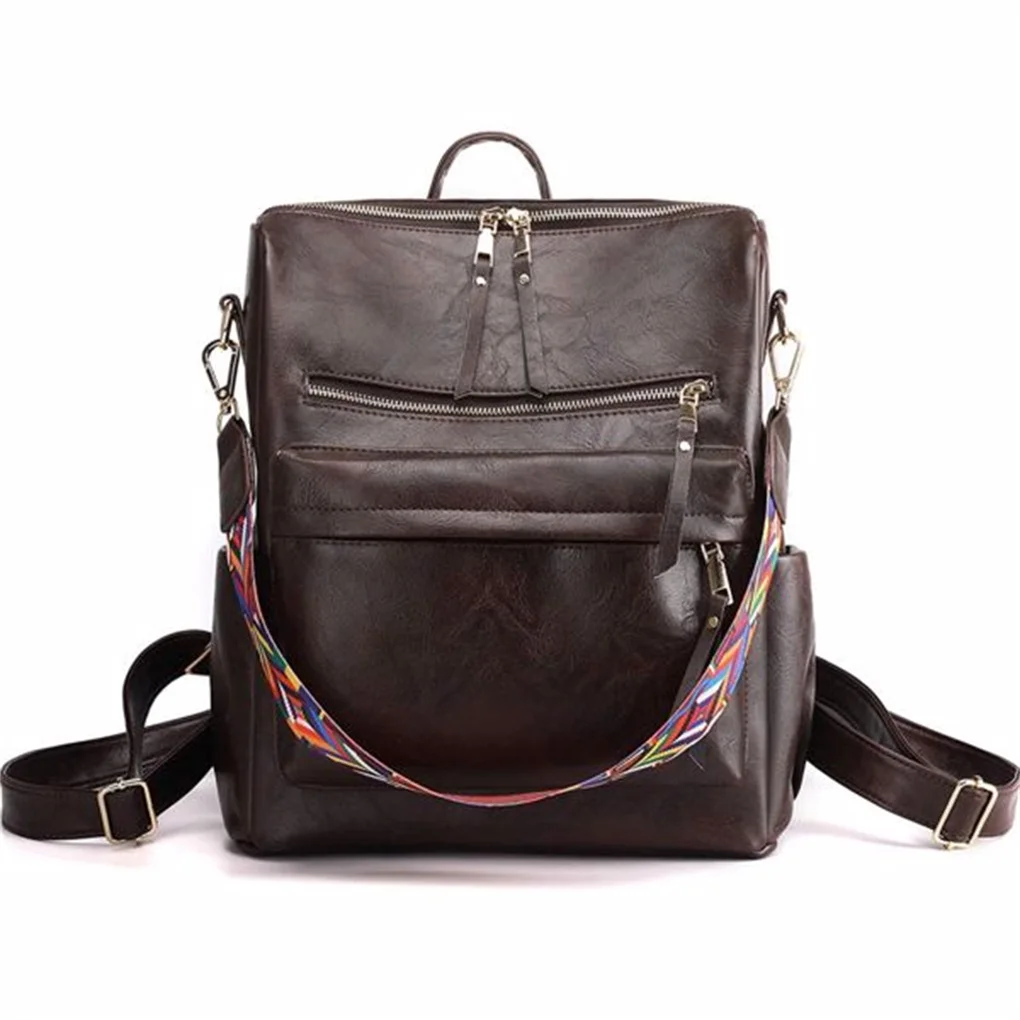
Frequently Asked Questions About Leather Waterproofing
Can all types of leather be waterproofed effectively?
Different leathers respond differently to waterproofing. Smooth, full-grain leathers accept most treatments well, while suede and nubuck require specialized sprays only. Patent leather already has a waterproof coating and typically needs only maintenance rather than additional waterproofing.
How often should I reapply waterproofing treatments?
The frequency depends on your bag’s usage and exposure. For daily-use bags, reapply every 3-4 months. Occasional-use bags may need treatment just twice yearly. Always reapply when you notice water no longer beading on the surface.
Will waterproofing change how my bag looks or feels?
Sprays typically cause minimal change, while waxes and oils can alter both color (darkening) and texture (smoother finish). The degree of change depends on the leather type and specific product used. This is why patch testing is essential.
Are there eco-friendly waterproofing options available?
Yes, several brands now offer water-based, solvent-free formulations with biodegradable ingredients. Natural beeswax treatments are also environmentally friendly options when combined with sustainable oils.
Can I waterproof already water-damaged leather?
Leather should be restored first before waterproofing. Clean the bag, allow it to dry completely, condition thoroughly to restore flexibility, and only then apply waterproofing treatment. Severely damaged leather may require professional restoration.
How do I know if my waterproofing treatment is still effective?
Place a few drops of water on an inconspicuous area of your bag. If the water beads up and rolls off, your protection is still working. If it darkens the leather or soaks in quickly, it’s time to reapply.
For those interested in built-in protection, exploring the essential features of waterproof leather backpacks can help you understand factory treatments. Our selection of premium men’s leather backpacks incorporates many of these protective elements while still benefiting from additional care.
